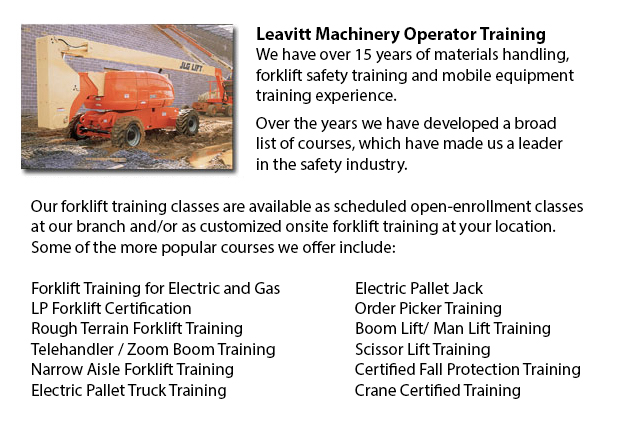
Prince Albert Boom Lift Safey Training - Boom lifts fall under the category of aerial lifting device or elevated work platform. Most usually used in warehousing, construction and industry; the boom lift is very versatile that it can be used in practically whichever environment.
Elevated work platforms enable personnel to access work places that will be inaccessible otherwise. There is inherent risk in the operation of these devices. Employees who operate them should be trained in the correct operating methods. Avoiding accidents is paramount.
The safety factors which are included in using boom lifts are covered in our Boom Lift Training Programs. The course is suitable for individuals who operate self-propelled elevated work platforms and self-propelled boom supported elevated work platforms. Upon successfully finishing the course, Those who participated will be issued a certificate by somebody licensed to verify completing a hands-on assessment.
Industry agencies, local and federal regulators, and lift manufacturers all play a part in providing information and establishing standards to be able to help train operators in the safe utilization of elevated work platforms. The most important ways in preventing accidents related to the utilization of elevated work platforms are the following: inspecting machines, putting on safety gear and performing site assessment.
Key safety factors when operating Boom lifts:
Operators stay away from power line, observing the minimum safe approach distance (MSAD). Voltage could arc across the air to find an easy path to ground.
A telescopic boom must be retracted prior to lowering a work platform to be able to maintain stability when the platform nears the ground.
Personnel working from the Boom lift platform should tie off to ensure their safety. Safety harness and lanyard combinations must not be attached to any anchorage other than that provided by the manufacturer, never to other poles or wires. Tying off may or may not be necessary in scissor lifts, depending on specific employer guidelines, job risks or local regulations.
Avoid working on a slope that exceeds the maximum slope rating as specified by the manufacturer. If the slop exceeds requirements, therefore the machine should be winched or transported over the slope. A grade can be measured without problems by laying a minimum 3-feet long straight edge or board on the slope. Then a carpenter's level can be laid on the straight edge and the end raised until it is level. The per-cent slope is attained by measuring the distance to the ground (also known as the rise) and dividing the rise by the length of the straight edge. Afterward multiply by one hundred.
-
Prince Albert Forklift Training Courses
Prince Albert Forklift Training Courses - When forklift operator safety training is tailored for illiteracy, training time is lessened by 50 percent. Lift-truck operator driver safety training evaluation, train the trainer and forklift training certi... More -
Prince Albert Heavy Equipment Training
Prince Albert Heavy Equipment Training - The two most common kinds of heavy equipment training are classed into the categories of equipment; equipment which is fashioned with rubber tires or those with tracks. The tracked vehicle are heavy duty machi... More -
Prince Albert Order Picker License
Prince Albert Order Picker License - Order preparation operation or order picking as it is more usually known is a method utilized within warehouse operations and comprises staff called order pickers. The order picker's duty is to take and collect ar... More -
Operator Safety Training, Re-Qualification Training, In-House Instructor Training in Prince Albert
Used in nearly all warehouse operations, boat yards or industrial construction sites, the lift truck is a very important part to be able to help raise and transfer cargo. The reach feature of a lift truck can help improve the applications which the f... More -
Prince Albert Overhead Crane Certification
Prince Albert Overhead Crane Certification - The overhead crane training certification program is designed to be effective with all those participating regardless of language or literacy restrictions. The course has two parts: a practical training se... More -
Prince Albert Heavy Equipment Training Programs
Prince Albert Heavy Equipment Training Programs - There are different types of equipment that are ready to be utilized at any given time on a construction site. These equipment require mechanics to be able to complete the maintenance tasks, operators... More -
Prince Albert Crane Operator Certification
Prince Albert Crane Operator Certification - The process to allow individuals to operate specific kinds of cranes is to take crane operator certification training to be given certification. The certification process consists of classroom learning, ha... More -
Prince Albert Crane Safety Training
Prince Albert Crane Safety Training - Both crane driver as well as their employers should know all the possible issues associated to the use of an overhead crane. All over North America, there is legislation that provides regulation for the safe oper... More

Forklift Certification Prince Albert
TOLL FREE: 1-888-254-6157
Prince Albert, Saskatchewan
forkliftcertificationprincealbert.com
Email Us
About Us


